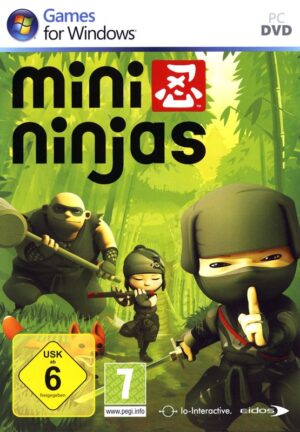Retro Replay Review
Gameplay
Shin Megami Tensei’s gameplay strikes a compelling balance between classic first-person dungeon crawling and innovative demon management. You navigate maze-like structures in modern Tokyo from a first-person perspective, mapping each turn and corner as you search for hidden treasures, critical story events, and demon negotiations. Encounters are entirely random, ensuring that no two expeditions feel exactly the same and maintaining a constant sense of tension as Magnetite— the life force of summoned demons— ebbs and flows with each skirmish.
(HEY YOU!! We hope you enjoy! We try not to run ads. So basically, this is a very expensive hobby running this site. Please consider joining us for updates, forums, and more. Network w/ us to make some cash or friends while retro gaming, and you can win some free retro games for posting. Okay, carry on 👍)
Combat unfolds in a traditional turn-based system, but with the strategic depth that only demon summoning can provide. As the young hero, you wield swords and guns, while the heroine joins your party with spells and support magic. Beyond direct attacks, the real heart of battle is found in conversation: you can choose dialogue options to persuade demons to join your cause, turning potential foes into invaluable allies. This negotiation mechanic adds a layer of risk and reward that keeps every fight engaging, since failing to recruit a powerful demon can mean forfeiting a powerful party member down the line.
Character progression also deviates from genre norms by offering manual stat allocation for the hero and heroine. Instead of predetermined level-up bonuses, you decide whether to focus on strength, defense, agility, or magic, allowing for customized builds that suit your play style. Demons level up separately, gain new abilities, and evolve through fusion— combining two or more demons to create a new entity with inherited skills. This fusion system encourages experimentation and planning, as the right combination can yield powerful results that carry you through the toughest parts of the game.
Strategic choices extend beyond combat tactics to the core narrative, as your decisions align you with one of three ideologies: Law, Chaos, or Neutral. These moral alignments influence demon affinities, available equipment, and branching story paths. Whether you strive for order, rebellion, or a balanced approach, your chosen path unlocks different demons, dialogue options, and endings. This ideology system greatly enhances replay value, pushing you to explore how each philosophy reshapes Tokyo’s fate.
Graphics
Given its early ’90s origins on the Super Famicom, Shin Megami Tensei delivers sharp, functional pixel art that perfectly captures its eerie atmosphere. Dungeon walls are rendered with simple textures and color palettes, yet the minimalist design heightens the sense of isolation and dread as you venture deeper into post-apocalyptic Tokyo. Each labyrinth feels claustrophobic and unpredictable, encouraging methodical exploration and careful mapping.
Demon sprites are where the graphics truly shine. Drawing inspiration from global mythologies, each creature is distinct in silhouette, color, and animation. From towering angels to grotesque fiends, the sheer variety of models—paired with expressive idle and attack poses—brings the supernatural world to vivid life. Textures are crisp enough to identify individual demons at a glance, which is crucial when you’re deciding whom to negotiate with mid-battle.
While modern gamers may find the UI sparse compared to contemporary standards, it remains intuitive and responsive. Menus for demon management, fusion, and equipment swap cleanly in and out of view, allowing you to make critical decisions under time pressure. Battle animations are straightforward but effective, with clear indicators for hits, misses, and elemental vulnerabilities.
The juxtaposition of everyday Tokyo with nightmare environments is skillfully rendered through background images and event portraits. Key story scenes feature more detailed artwork, illustrating the young woman in the pool or the figure hanging on a cross with haunting clarity. These moments stand out visually, reinforcing the game’s fusion of mundane reality with occult horror.
Story
At its core, Shin Megami Tensei tells a tale of fate, free will, and the thin veil between our world and the supernatural. You play as a young man living with his mother in Kichijoji, Tokyo, until a surreal dream draws him into a twisted realm. Encounters with a cross-hanging man, a demon-tormented victim, and a mysterious bathing woman set the tone for a narrative that continually blurs the lines between dream and reality.
Upon waking, you receive a dire warning via your computer: the world stands on the brink of destruction, and only someone capable of summoning demons can avert the impending catastrophe. When a murder in a local park isolates Kichijoji from greater Tokyo, the stakes become intensely personal. Equipped with a device to call forth demons, you begin to uncover a web of conspiracies, ideological battles, and moral quandaries that force you to question every ally and every choice.
Shin Megami Tensei is not a straightforward hero’s journey. Instead, it challenges you to navigate ideological conflict between Law, Chaos, and Neutrality— each representing different visions for humanity’s future. Critical story junctures demand that you side with one faction or forge your own path, with each choice dramatically altering the finale and the world’s ultimate fate. The narrative’s branching design encourages multiple playthroughs to fully grasp every twist and consequence.
Interspersed with dungeon forays are vivid event sequences that delve into the game’s philosophical underpinnings. Conversations with demons, citizens, and fellow summoners reveal hidden agendas and ethical dilemmas. By immersing you in a post-apocalyptic Tokyo where every decision reverberates on a cosmic scale, the story maintains a grim yet compelling momentum from start to finish.
Overall Experience
Shin Megami Tensei stands as a landmark RPG that combines strategic depth, atmospheric world-building, and a morally complex storyline. Its mechanical innovations—especially demon negotiation, fusion, and ideological alignments—set it apart from contemporaries and paved the way for future entries in the franchise. Every expedition into Tokyo’s shattered streets feels fraught with danger and possibility, making each triumph and setback resonate deeply.
Though the graphics and user interface reflect their era, the game’s design philosophies remain remarkably fresh. The emphasis on player choice—both in combat and narrative—ensures that no two playthroughs are identical. Whether you’re forging friendships with ancient deities or battling for the survival of humankind, your journey is uniquely yours, shaped by the alliances you strike and the convictions you uphold.
For newcomers to the series, Shin Megami Tensei offers a challenging yet immensely rewarding experience. Its difficulty curve demands patience and planning, but the sense of accomplishment that comes from outsmarting a powerful demon or unlocking a new fusion demon is unmatched. The game’s rich lore and branching paths will keep you invested long after the credits roll.
In summary, Shin Megami Tensei remains a milestone in RPG design, blending dungeon crawling, demon management, and philosophical storytelling into a cohesive whole. Its evocative world, strategic depth, and replayable structure make it a must-play for fans of dark fantasy and turn-based strategy. Whether you’re a veteran demon summoner or a newcomer curious about the origins of modern JRPG innovation, this title promises an unforgettable descent into the heart of chaos and order.
 Retro Replay Retro Replay gaming reviews, news, emulation, geek stuff and more!
Retro Replay Retro Replay gaming reviews, news, emulation, geek stuff and more!









Reviews
There are no reviews yet.